As Winter's chill settles in, it's also a great time to settle in with some new Japanese learning resources with which to study! Our intrepid team has compiled some of the best new resources we've found for Winter 2021-2022. Take a look and see if there's anything new to you as well!
- CicoJapanese
- Asakusa Kid
- Let's Learn Japanese - Miho Channel
- BretMayer.com
- IRODORI Japanese Online Course
- Japanese Tomato
- Natively
- @KayoShodo's Calligraphy Courses
- Sōseki Project Website
- Mochijapa YouTube and Twitter Accounts
CicoJapanese
CicoJapanese is the name of a channel where the host, Cico, teaches casual Japanese phrases. You can access her content on most social media channels including Twitter, Instagram, and TikTok. Depending on which platform you choose, the content is slightly different. On Twitter, for instance, Cico seems to be more active. You can get more of a glimpse of her lifestyle, sometimes featuring videos or photos of Kyoto where she lives, or of her family's activities.
The videos that Cico creates are all relatively short, clocking in at around 45 seconds. The content is always pretty helpful and includes topics like textbook versus real Japanese usage, and different ways to say the same thing in Japanese. Cico is energetic and fun, which makes her videos enjoyable to watch. Her adorable daughter is often featured in her videos as well.
The content is probably best for beginner to intermediate Japanese learners, and is especially helpful for those who want to practice more natural ways to speak conversational Japanese. She also offers group lessons, and you can reach out to her for more information. Have fun scrolling and learning!
Asakusa Kid
Looking for something new to watch on Netflix? We've got you covered. Asakusa Kid is a film based on the life of renowned Japanese comedian Kitano Takeshi, a.k.a Beat Takeshi, who you may also know as an actor, a movie director or a popular TV show host and commentator these days. The story, based on true events, takes you through the early years of Kitano's career at France-za in Asakusa, a comedy club that doubles as a strip club. Although Kitano starts off with little comedic skill, he apprentices under Fukami, the owner of the club who recognizes his potential, and Kitano quickly picks up various tricks of the entertainment trade, like tap dancing. The film showcases Kitano's rise to fame and reflects on some of the hardships of the industry.
In terms of language use, the film portrays Tokyo's "good-old" shitamachi dialect, which is somewhat vulgar and blunt, but has a good rhythm and an element of humor lacking in the standard Tokyo dialect. If you decide to check it out, keep an ear out for expletive phrases (a.k.a. curse words) like ばかやろう (bakayarо̄, meaning "dumb-ass"). You'll hear Kitano use it quite frequently, even today.
Despite it being a film about the career of a comedian, it has dark undertones with themes of debt, betrayal, and death. The acting is impressive, and features some well-known Japanese actors, a few of whom you may recognize. The shots are vivid and beautifully crafted, providing a realistic glimpse of retro Tokyo. Whether you're familiar with this comedian or not, it's one to watch!
Let's Learn Japanese - Miho Channel
If this channel feels like a blast from the past, that's because it is! Around eleven years ago, the host started this YouTube channel to teach Japanese. Although only a few dozen videos were released at the time, in the past year it's been revamped with tons of new content. Miho, who runs the channel, used to teach at the University of Pennsylvania, and knows English as well as her native Japanese. The channel is aimed at helping both English speakers learning Japanese, and Japanese speakers who are interested in learning English.
The length of each video depends on the content. For instance, the "3 Min Japanese" segments are some of the shortest and feature more conversation-like topics. The grammar videos are a bit longer, go into more depth, and provide examples. The longest are the shadowing exercises (which can be over an hour long) where everything is repeated twice. These are perhaps some of the most helpful videos for beginners, especially those who do well with repetition exercises.
The videos are targeted more toward beginner to intermediate learners, but she has content for all levels; the N5-N1 listening practice videos are a good example. The amount of Japanese and English used isn't always consistent, so you'll likely need some knowledge of both. One other thing that might be an adjustment to listeners is the higher pitched, slightly distorted vocal effect on Miho's audio, but you may not notice it to begin with. Unfortunately, video production stopped in August due to personal health issues, but we hope to see her back one day.
BretMayer.com
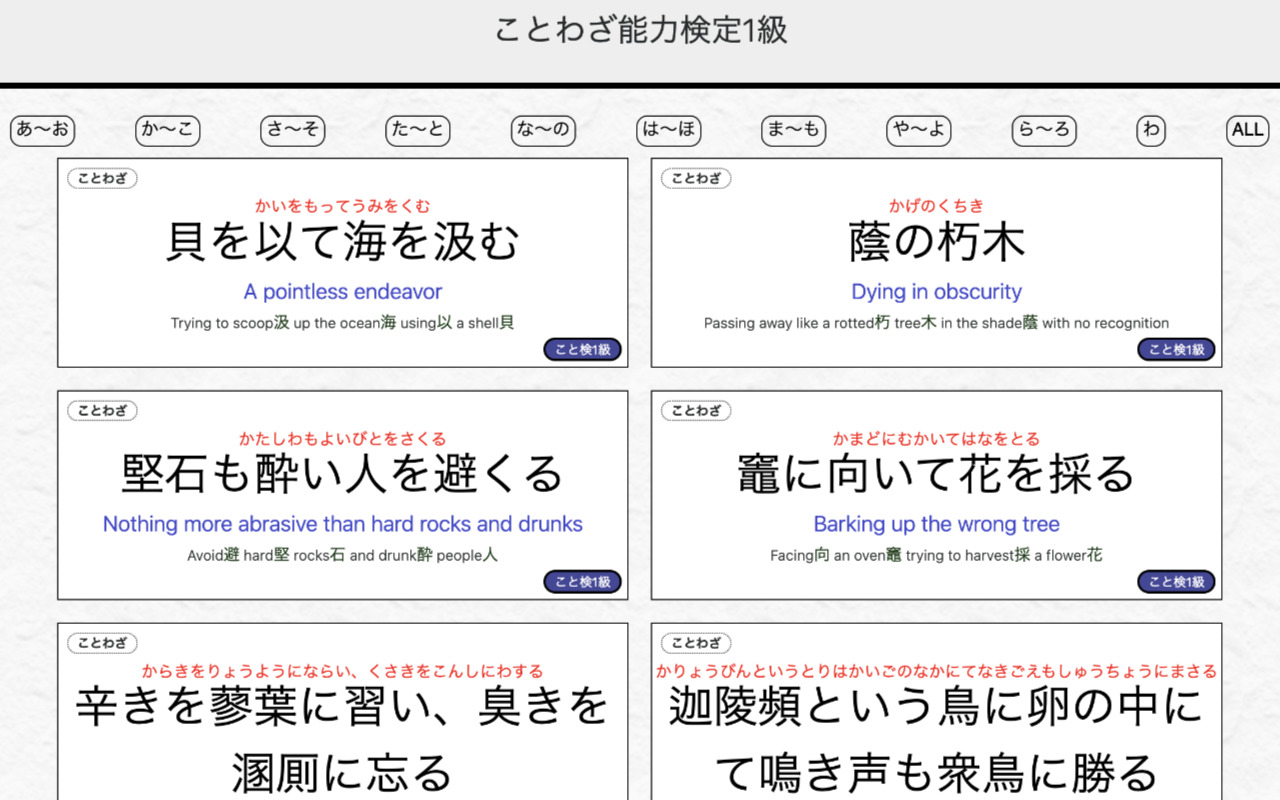
This website, created by a guy named Bret Mayer (obviously), is an essential tool for anyone serious about learning kanji, and especially helpful for anyone looking to take Japan's official kanji knowledge test, the Kanji Kentei.
Mayer's site has a number of useful resources that make researching kanji words nearly painless: vocab lists, a 4-character idiom index at various levels, proverbs ranging from simple to complex compound structures, a list of terms with non-standard kanji usage, and more. He also provides memory hints and helpful explanations to drive home the meaning of kanji. For example, 顎を出す (ago o dasu), includes the memory hint below it: "So tired you can only extend 出 your jaw 顎 forward." Another example is the kanji word 鄙見 (hiken) means "a dumb thought." Below this, he provides the following explanation: "Used to criticize another's opinion, or play down your own."
Due to the amount of difficult and complex content on the site, advanced learners, those seeking to take the Kanji Kentei exams, and even upper-beginner or intermediate learners who have a high kanji proficiency will likely get the most use out of it. Beginner and intermediate learners shouldn't be discouraged from visiting though, as this is a great resource for digging into really wacky kanji. I'm looking at you, 飇風 (hyoufuu, meaning whirlwind). It should also be noted that the kanji section of this website is only one half of the content. You can also find pages dedicated to Japanese tea and some stories in Japanese and English accessible via the homepage.
IRODORI Japanese Online Course
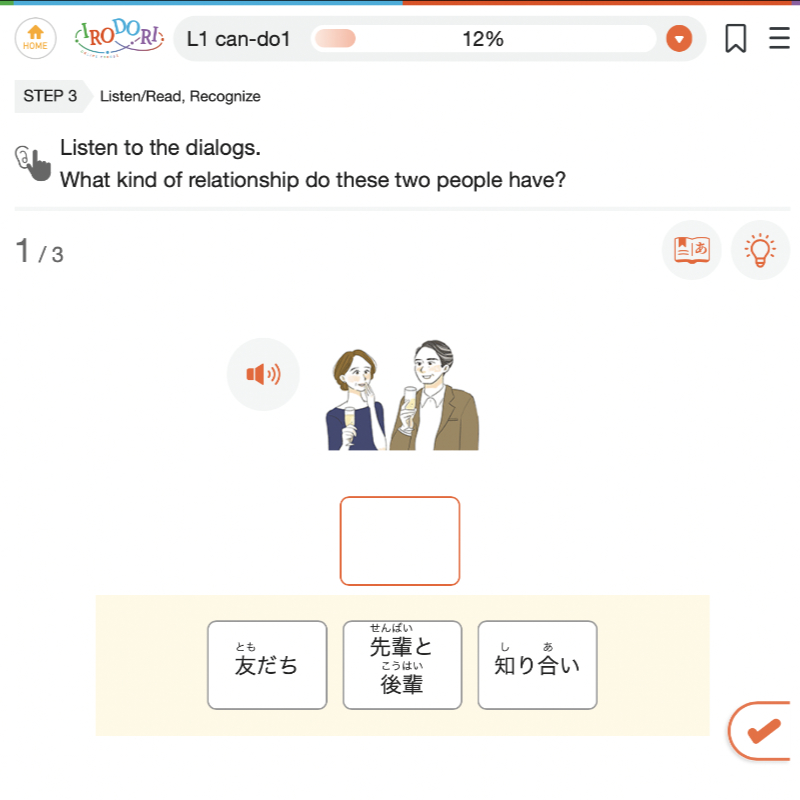
Anyone looking for an upper-beginner, standards-based, interactive, and easy-to-use online Japanese learning course will be delighted to try the IRODORI Japanese Online Course. This free Japanese-learning site is designed by the same people who made the Marugoto textbooks, which are known for their interactive and colorful content. IRODORI is designed very similarly: fun, intuitive, and full of comprehensible media. Unlike Marugoto, however, IRODORI is slightly faster-paced and is designed for those who have already completed an absolute beginner course in Japanese (i.e. the A1 level, according to the Japan Foundation's language standards). So, if you already know hiragana, katakana, some kanji, and basic grammar and vocabulary, then the IRODORI Japanese Online Course may be right for you!
The content is highly organized with lessons divided into 9 topics (content themes) with two lessons per topic. All 18 lessons are populated with writing, reading, listening, and speaking activities. While reading and listening activities may be understandable for an online language course, IRODORI is unique in that it incorporates spaces for learners to record their own speaking and writing practice with each lesson. These can be saved to a user "portfolio" which users can access later to see how far they've come in their studies. There is also a distinction made between studying (i.e. learning new material) and practicing (i.e. reviewing material you have already learned).
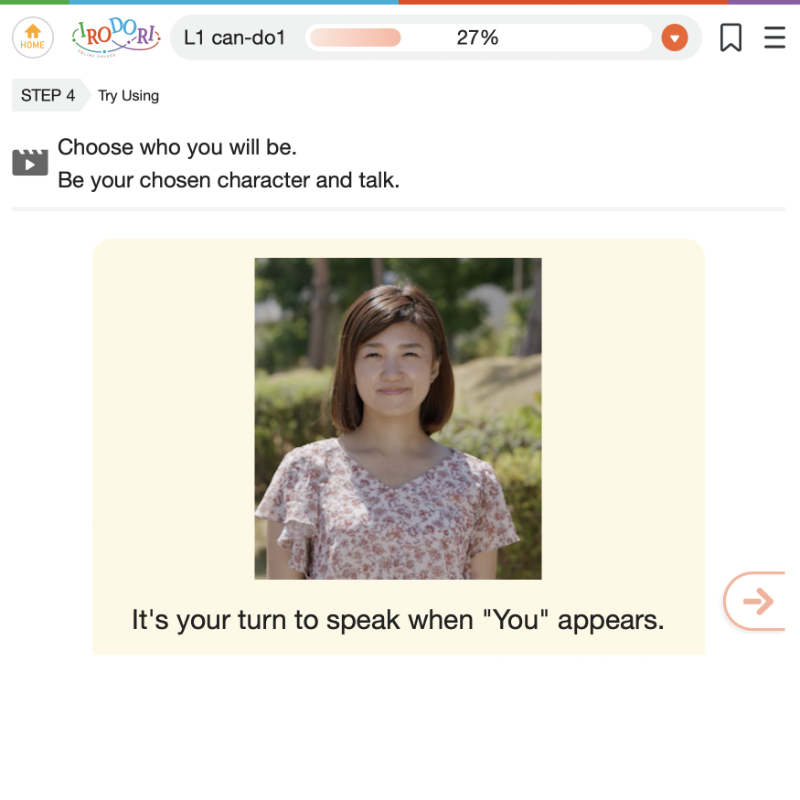
It's actually hard to believe that all of this content is accessible to everyone free of charge. You can see their content lists for the Elementary 1 and Elementary 2 levels, vocabulary lists (Elementary 1 and Elementary 2), expression lists (Elementary 1 and Elementary 2), and a kanji list (Elementary 1 and Elementary 2). You can also find a print version of IRODORI for levels A1 to A2 free of charge here. In fact, the IRODORI Online Course is based on this print version, which was designed to help foreigners adjust to life in Japan and encourage others to come to Japan for highly-skilled work.
Japanese Tomato
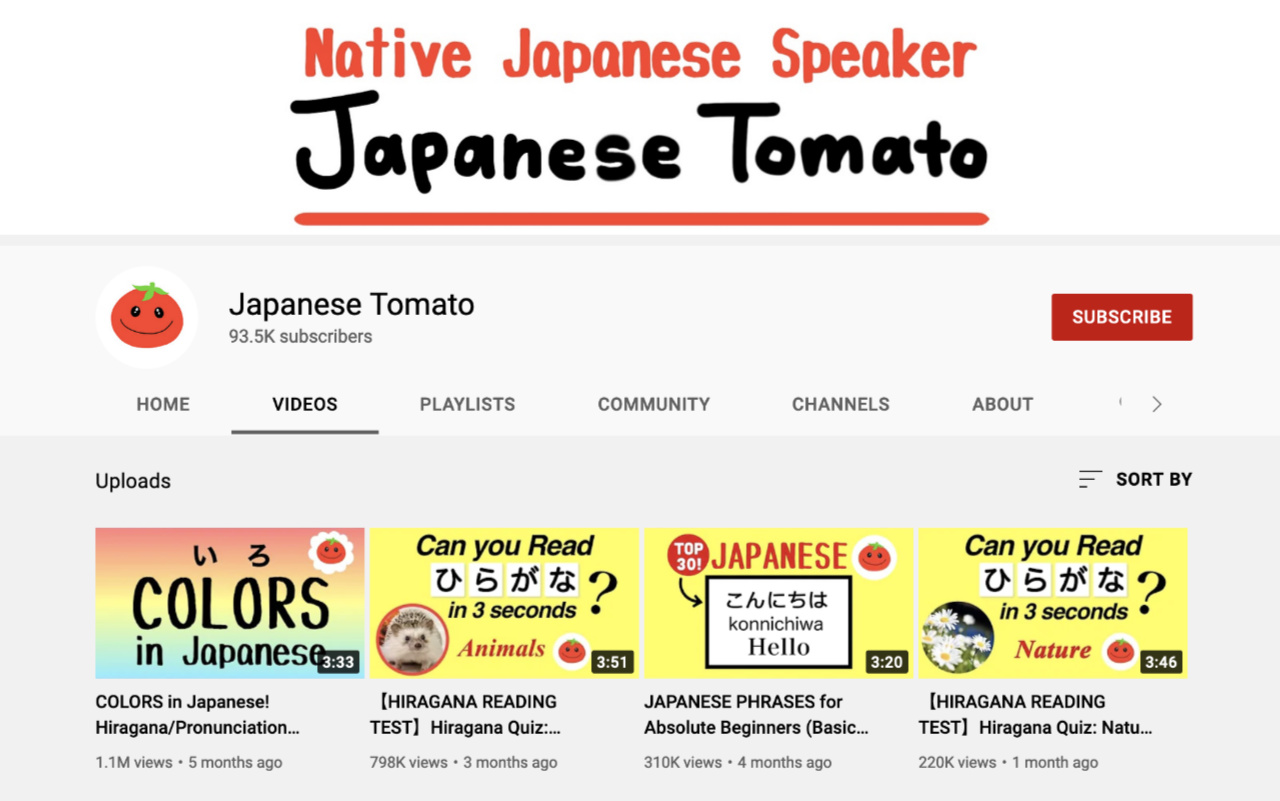
With only 14 videos as of the publication of this article, this small YouTube channel has garnered over 85 thousand subscribers and over a million views on their very first video alone. Japanese Tomato videos are simple Japanese lessons that usually cover a single topic such as, "Colors in Japanese" or "Can You Read Hiragana in 3 Seconds (Animal Edition)." The lessons are very basic and may appeal to absolute beginners. After content is presented, you will usually be given a practice session to use what you have just learned. Watching one or two of these short video lessons may be a good way to supplement learning.
While these videos are not amazingly revolutionary, nor outstanding in the visual effects department, the channel manages to get thousands of views on each one. Commenters really seem to enjoy the pace of each video lesson and are generally happy to have learned something new. There are only a handful of videos published, but the channel seems to update regularly.
Natively
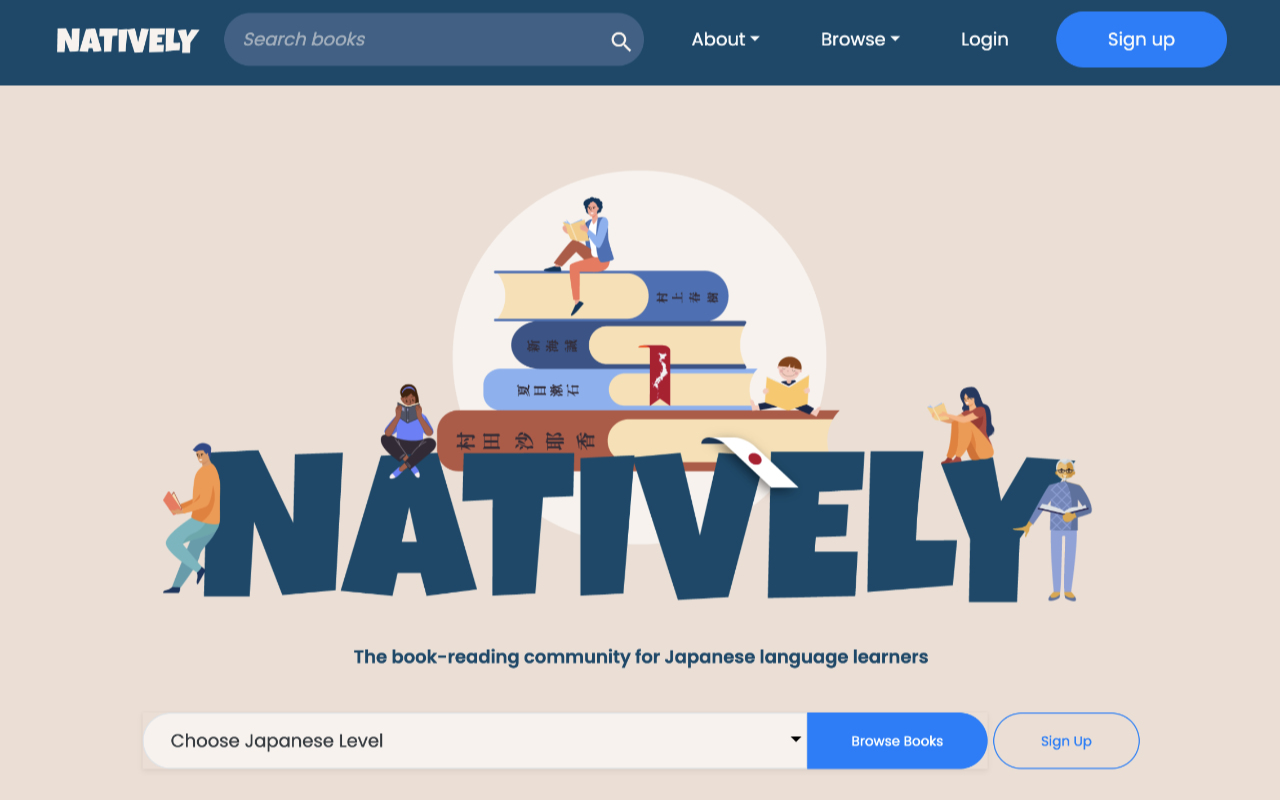
Self-proclaimed as a "book-reading community for Japanese language learners," this website is essentially a database of books in Japanese and other written resources that are broken down into levels by difficulty. The site emphasizes getting native content into the hands of learners and relies on the language-learning community to grade resources to help organize content. It employs seven levels into which all texts (excluding textbooks) are categorized based on these community ratings. Resources are also organized by category including, but not limited to, manga, light novels, children's books, graded readers, and more.
The site tries to align its difficulty levels to those of the Japanese Language Proficiency Test (JLPT). In a book search page, you can actually sort the books you are looking for by JLPT level. It also contains specialty categories so you can search for books that are free, books that have won awards, or even those in the WaniKani book club.
All in all, this site is excellent for learners of Japanese looking for some guidance and structure on where to begin on their reading journey. It can be a helpful resource when you're searching for just the right manga or a textbook to match your current level. If you are a more goal-oriented person, it is the perfect site for planning which books you will tackle in the future.
@KayoShodo's Calligraphy Courses
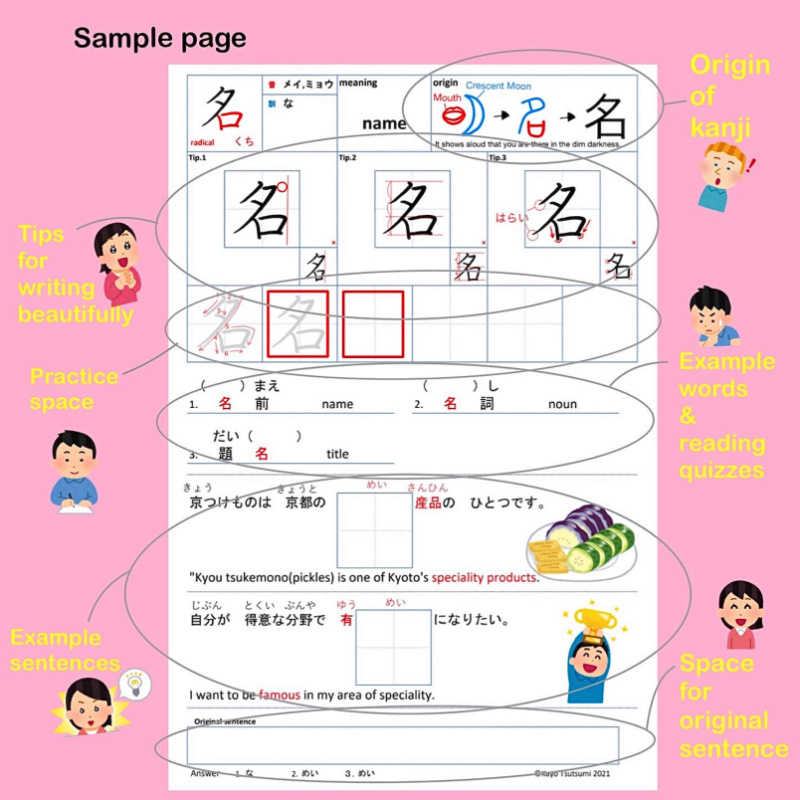
Kayo Sensei is a Japanese calligrapher who specializes in offering guided lessons for each element of the Japanese writing system across hiragana, katakana, and kanji. While many textbooks and traditional courses offer some form of writing practice, it can be difficult for non-Japanese people to learn the correct shapes of characters aside from simply trying to copy how they're printed on computers and in books, which can vary a lot from how a Japanese person might write a character.
Kayo Sensei makes the process of navigating Japanese handwriting easy through recorded video and photo tips on Twitter; self-published textbooks focusing on hiragana, katakana, and kanji; as well as both video corrections and a virtual course three times a month. Both her textbooks and tips on Twitter are especially helpful, showing both the broad strokes to achieving the correct shape and balance of each character, and the more precise elements that separate a "good" character from a "great" one.
Sōseki Project Website

The Sōseki Project is a website that provides a number of features to make reading the works of Japanese writer Sōseki Natsume in the original Japanese more accessible for students of Japanese. The website, created by Ian Sotherland, features Sōseki's novels Botchan, Sanshirō, Kokoro, and I am a Cat, and four of his shorter works: Ten Nights of Dreams, Bunchō, The Tower of London, and Peculiar Sounds.
Clicking on a book title takes you to a landing page that breaks the work down into different chapters. From here, each chapter is broken down further into sections, each with their own audio narration. The text is presented without furigana to start, but certain terms are underlined, and hovering your cursor over these terms will display both furigana and a definition. There's also a study guide for each section, giving a rough translation to reference if you get stuck, and a vocabulary list. Finally, the site offers PDFs of the different texts, both with and without furigana, an English translation, and the MP3 files of the narrated readings, though not every version of the text is currently available for download.
Altogether, this is a great way for more advanced Japanese learners to get more authentic reading practice with advanced, well-known, and well-regarded classic Japanese literature. The tools offered make tackling these books a lot more digestible, while giving a student space to try and read independently before looking for help. Additionally, Sōseki is required reading for many Japanese Language and Literature graduate studies programs in the US, and the Sōseki Project helps students explore new depths in the writer's work.
Mochijapa YouTube and Twitter Accounts

Irizuki Ayano is a Japanese teacher who teaches both as herself on Twitter, and as the VTuber Mochina Amatsuka on YouTube. Before she became a certified Japanese teacher, Ayano Sensei worked in the video game, voice acting, and modeling industries. As such, she's very well-versed in Japanese pop-culture, and some of the tips she shares on Twitter reflect that interest. Covering a diverse range of topics in her content, she posts about a wide variety of interesting vocabulary that pertain to slang, specific franchises like Naruto, popular snacks, and more, offering new ways for learners to engage with Japanese pop culture.
On YouTube, Mochijapa offers a range of content, from more traditional language-learning study videos, videos on specific vocab or grammar points, common misconceptions or mistakes for Japanese learners, and even a video discussing pitch accent. The videos are very high quality, with immediately useful content delivered in a fun and informative way, and it's clear that Mochijapa cares a lot about effective teaching. I just wish she had more videos!
From all of us here at Tofugu, we hope you have a restful end of the year, and a fruitful ラストスパート on studying Japanese in 2021! If you discover any new Japanese learning resources, send us an email at hello@tofugu.com or reach out to us on Twitter @tofugu. We're always on the hunt for some new, great resources. Here's to 2022!
